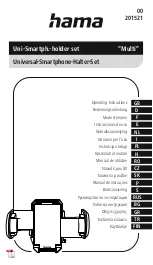
PDF: 4749051511/Source:7788125767
Aptina reserves the right to change products or specifications without notice.
MT9T111_DG - Rev. B 9/10 EN
33
©2007 Aptina Imaging Corporation. All rights reserved.
MT9T111: Developer Guide
One-Time Programmable (OTP) Memory
Preliminary
One-Time Programmable (OTP) Memory
The MT9T111 Rev3 has 5K-bits of OTP memory that can be used during module manu-
facturing to store specific module information. This feature enables system integrators
and module manufacturers to label and distinguish various module types based on
lenses, IR-cut filters, or other properties.
During the programming process, a dedicated pin for high voltage is needed to perform
the OTP memory programming. This voltage (V
PP
) should be 8.5V ±3%. Instantaneous
V
PP
cannot exceed 9V at any time. Completion of the programming process will be
communicated by a register through the two-wire serial interface.
Because this programming pin needs to sustain a higher voltage than other input or
output pins, having a dedicated high voltage (V
PP
) pin minimizes the design risk. If the
module manufacturing process can probe the sensor at the die or PCB level (that is,
supply all the power rails, clocks, and two-wire serial interface signals), then this dedi-
cated high voltage pin does not need to be assigned to the module connector pin out.
However, if the V
PP
signal needs to be bonded out as a pin on the module, the trace for
V
PP
needs to be able to carry a minimum of 4mA for programming only. This pin should
be left floating when not programming the OTP memory.
Programming the OTP memory requires the sensor to be fully powered with its clock
input applied. After V
PP
power is applied, the information from the host processor will
be programmed through the use of the two-wire serial interface. Once the data is written
to internal registers, the host processor sends a program command to the sensor to
initiate the programming process.
After the sensor has finished programming the OTP memory, the host machine should
poll the write bit through the two-wire serial interface. The write bit will be cleared and
go to “0.” Only one programming cycle for the OTP memory can be performed.
Reading the OTP memory data requires the sensor to be fully powered and operational
with its clock input applied. The data can be read through registers from the two-wire
serial interface.















































